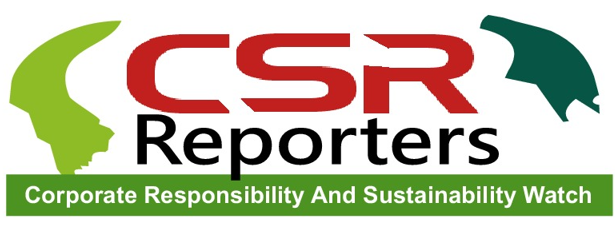
VERITABLE! 12 ways to live sustainable life
Every day we make choices in our lives that affect the environment, the climate and other species. From what we eat to how many children we decide to have, there’s a lot we can do to “choose wild” and reduce our environmental footprint to leave more room for wild animals and plants. Our individual actions matter — but we can’t do it alone.
Here below are 12 smart ways you can live sustainably and veritably so!
1. Think twice before shopping.
Think twice before shoppingEvery product we purchase has an environmental footprint, from the materials used to create it to the pollution emitted during manufacturing to the packaging that ends up in landfills and incinerators. Even if you can recycle or compost a product at the end of its life, the upstream damage has already been done. So before you buy, ask yourself if you really need it. If you do, consider buying secondhand instead of new, and look for products made from lower-impact materials and with minimal packaging and shipping.
2. Ditch plastic and switch to reuse.
Ditch plastic and switch to reuse.Plastic never goes away. At least 14 million tons of it ends up in the ocean annually, making up 80% of all marine debris. Every year thousands of seabirds, sea turtles, seals and other marine mammals are killed after ingesting plastic or getting tangled up in it. You can start cutting down on your plastic waste in a few simple steps: Use reusable bags when you shop, ditch single-use water bottles, bags and straws, and avoid products made from or packaged in plastic whenever possible (e.g., select unwrapped produce at the grocery store). Switch from single-use to reusable products every chance you get — every piece of plastic avoided is a win for the planet.
3. Take extinction off your plate.
Take extinction off your plateMeat production is one of the most environmentally destructive industries on the planet, responsible for massive amounts of water use, pollution, greenhouse gas emissions and habitat destruction. So when you choose to eat more plant-based foods and reduce your meat consumption you reduce your environmental footprint. Also, food is the single largest category of material thrown into municipal landfills. In the United States nearly 40% of edible food goes to waste — and all of the land, water and other natural resources that went into producing it go to waste along with it. Prevent food waste with smart, planned shopping and make sure to consume what you purchase.
4. Simplify the holidays.
Simplify the holidaysHolidays, birthdays, weddings and other celebrations are often excessively wasteful. In December, for example, Americans create 23% more waste than in other months of the year. But it’s not just the extra trash that’s a problem. All the fossil fuels, trees and other natural resources that go into producing gifts, decorations, single-use dinnerware and wrapping paper make our celebrations dreary for wildlife and the habitat they need to survive. But you can redefine your celebrations in ways that respect land, waters and wildlife. Instead of celebrating your next holiday with plastic décor, excessive gifts and single-use food and drink containers, you can decorate with foraged plants, give homemade or secondhand gifts, and serve plant-based meals with reusable dinnerware.
5. Choose organic.
Choose organicFrom coffee to fruit to clothing, choosing organic products helps reduce your impact on wildlife and the planet. More than 2 billion pounds of pesticides are sold annually in the United States. Pesticides are pervasive in fish and wildlife habitat and threaten the survival and recovery of hundreds of federally listed species. Pesticides also pollute the air, water and soil and contaminate the food we eat. If you garden, avoid pesticides at home by growing organically. Building wildlife habitat in your yard by growing native, pollinator-friendly plants and removing invasive species will attract beneficial insects and help keep unwanted pests away. When you choose organic, you’re keeping harmful pesticides out of our land and water, protecting farm workers, vulnerable communities, wildlife and your family.
6. Ditch fast fashion and animal-based textiles.
Ditch fast fashion and animal-based textilesFast fashion is an enormous, rapidly growing industry. The number of new garments made per year has nearly doubled over the past 20 years, and our global consumption of fashion has increased by 400%. The fast fashion industry is a significant contributor to the climate crisis, responsible for as much as 10% of global carbon emissions. Animal-based textiles like wool are responsible for water pollution, widespread habitat loss from deforestation, and other harms to wildlife. Slow down your fashion by caring for your clothes, repairing when possible and, when you need new clothes, shop secondhand or join clothing swaps. If you must buy new, look past the greenwashing and purchase clothing made of truly sustainable materials like organic cotton or Tencel from brands that are made to last.
7. Be water wise.
Be water wiseWater conservation is critical as our growing population puts increased demand on the nation’s water sources and we face unprecedented droughts. You can conserve water by taking shorter showers, fixing leaky toilets, and choosing low-flow and low-water appliance options. Consider xeriscaping your yard, a landscaping technique that uses native, drought-adapted plants that require less water and maintenance over time and provide habitat and food for birds and bees. Also, one of the biggest water hogs is animal agriculture, so shifting your diet away from meat and dairy products saves water too.
8. Drive less, drive green.
Drive less, drive greenFossil-fueled transportation emissions create greenhouse gases, smog, soot and other harmful air pollution. But changing your driving habits can dramatically reduce your carbon footprint. Walk, bike, carpool, use public transportation or join ride or bike shares whenever possible. Combine errands to make fewer trips. Participate in, or start, car-free days in your community. Ask your local officials to invest in electric vehicle fleets and charging stations, and if you’re in the market for a new car, consider buying electric. It’s also important to keep your car in shape with regular tune-ups and tire inflations. Tune-ups can increase your fuel efficiency — a tire that is 20% underinflated can increase a vehicle’s fuel consumption by 10%.
9. Green your home.
Green your homeJust as keeping your car in shape improves your fuel efficiency, keeping your home in shape improves your energy efficiency. Make sure your home has adequate insulation and energy-saving windows and use a programmable thermostat for more efficient heating and cooling — and, of course, energy-saving lightbulbs for more efficient lighting. If your state allows you to pick your electricity supplier, use a company that generates at least half of its power from wind, solar and other clean sources. Installing rooftop solar panels or solar water heating also helps the planet and can save you money. Many states now offer incentives to help you green your home or rental at low or no cost. Call your energy provider to see if it offers free energy audits or knows of a company that does.
10. Boycott products that endanger wildlife.
Boycott products that endanger wildlife. Products made from animals on the endangered species list are illegal to buy, sell, import or trade in the United States, but if a plant or animal hasn’t been listed yet, they can still be harmed for someone’s profit. Also, some products harm endangered species by threatening their habitat, from cutting down old-growth forests to using up the water that riparian species need to survive. To avoid contributing to the endangerment of wildlife, shop conscientiously and look for products made from sustainable materials like bamboo and dine at restaurants that refuse to serve imperiled species like bluefin tuna.
11. Fight for the right to choose when and if to start a family.
Fight for the right to choose when and if to start a family. With more than 8 billion people in the world our demands for food, water, land and fossil fuels are pushing other species to extinction. Human population growth and consumption are at the root of our most pressing environmental crises, but they’re often left out of the conversation. By advancing reproductive health, rights and justice and gender equity, we can improve the health of people and the planet because better education and access to family-planning services decreases family size and our overall carbon footprint. Get the conversation started by talking about family planning with your partner. In your community, stand up for reproductive freedom by supporting comprehensive sex ed in schools, free and easily accessible contraception and abortion access.
12. Take action. Use your voice.
Take action, Use your voiceOne of the best things you can do for wildlife and the planet, today and for the future, is to get politically involved in your community and at the national level. Vote for candidates with strong environmental platforms. Urge your representatives to pass stronger policies to limit greenhouse gases, fight climate change, protect wildlife and public lands and support access to reproductive health services. Vote with your wallet by donating to organizations fighting to end the extinction crisis. Sign and share action alerts, attend events, and talk to your friends about endangered species protection and the need to address human population growth and overconsumption.









